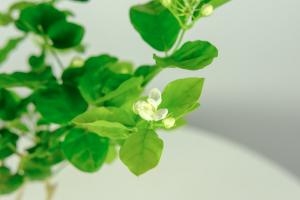When Do You Fertilize Tomato Plants?
Tomatoes are one of the most popular plants that gardeners grow. They are delicious, juicy, and full of vitamins and minerals. However, tomatoes require specific nutrients to grow properly, and fertilization is an essential part of the process. Understanding when to fertilize tomato plants is critical in ensuring the best possible yield.
Early Stages of Growth
When planting tomato plants, it is best to fertilize the soil before planting. This step helps establish a healthy environment that promotes quick and robust growth. Mix the soil with compost or aged manure before planting. Once planted, wait for about two weeks before applying another round of fertilizer.
At this stage, it is essential to choose an appropriate fertilizer with higher phosphorus content. Phosphorus is crucial for root development and fruit production. A good option is a 5-10-10 fertilizer, which will provide high levels of phosphorus without overfeeding the plant with nitrogen. Apply the fertilizer around the base of the plant and water thoroughly.
Mid-Season Fertilization
When tomato plants reach the flowering stage, it is time to apply more fertilizer. The plant's nutrient requirements increase as it starts developing fruits. A good option is a balanced fertilizer, such as a 10-10-10 or a 20-20-20 mixture. Apply the fertilizer every two to three weeks until the end of the growing season.
As the plants grow taller, it is essential to apply the fertilizer evenly around the plant. This ensures that the nutrients are distributed throughout the root system evenly. Avoid applying the fertilizer close to the stem, as this can burn the plants' roots.
End of Season Fertilization
As the tomato plants start approaching the end of the season, it is crucial to taper off the fertilization process. Doing so will help the plants focus on ripening and producing fruit instead of new growth. A good option is to apply a low nitrogen fertilizer, such as a 0-10-10 mix or an organic fertilizer, in the final weeks of the growing season.
It is also essential to stop fertilizing the plants about four weeks before the expected last frost date. This helps the fruit ripen naturally and will provide better flavor and color.
Conclusion
Fertilizing tomato plants is a critical process that can make a significant difference in the yield and quality of fruit. It is essential to fertilize at the appropriate times to provide tomatoes with the necessary nutrients to grow healthy and tasty. Remember to always follow the manufacturer's instructions when applying fertilizer, as too much or too little can damage the plant.
By following these simple tips, you'll be well on your way to growing the best tomatoes possible!

 how many times do yo...
how many times do yo... how many planted tre...
how many planted tre... how many pine trees ...
how many pine trees ... how many pecan trees...
how many pecan trees... how many plants comp...
how many plants comp... how many plants can ...
how many plants can ... how many plants and ...
how many plants and ... how many pepper plan...
how many pepper plan...






























